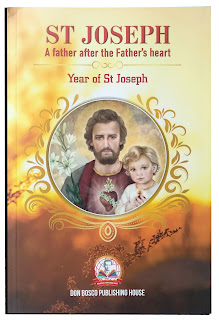Traditional Hermeneutics in South Asia
Jeffrey Timm, “Traditional Hermeneutics in South
Asia” in Texts in Context, ed. Jeffrey Timm, Delhi: Sri Satguru
Publications, 1997, 299-306.
The author calls for respect for the native exegete.
He notes the difficulty and possible bias there exists whenever there is a
cross-cultural attempt to understand and/or explain the hermeneutical approach
of a different culture. To this end, he exhorts for encountering the Other
through its own categories of understanding instead of forcing them into a
culturally foreign framework. He warns
against cultural imperialism and points out a problem it gives rise to: How to
understand diversity in a generic way? We can never transcend our culture, so
does this mean that we can never speak meaningfully of another culture? Can we ever
be objectively neutral?
To overcome these difficulty, he suggests that we
approach scripture and its interpretation as a dynamic and relational phenomenon
and not something static. Traditional hermeneutics tried to understand, define,
limit and expand the words of scripture. Scripture has special significance for
a specific community as they see it as possessing normative, salvific and
transformative power. Hermeneutics in this context requires familiarity not
just with the scriptural text and its commentaries but with other dimensions of
religious expression like rituals, language and history of traditions.
Miriam Levering in her edited work, Rethinking
Scripture: Essays from a Comparative Perspective, talks of 6 polarities
that can help prevent distorting traditions while trying to understand, compare
and synthesize their contributions:
1) Form/Fluidity – They help recognize that the dominant
forms and contents of sacred texts and interpretations are not static. Even
though such rigid characteristics as a scriptural canon and interpretation
methods exist, they are to be viewed as products of a specific cultural and
historical context and not divine in themselves. The diversity of interpretive
strategies testifies to the fluidity of the tradition. To put it simply, no
single understanding can be put over others; all are culturally and historically
situated. Therefore, by recognizing the historicity of Western views we can
break with the tendency to unconsciously valorize it as normative and superior
to Eastern or African views, for example.
2) Orality/Writtenness – Asian traditions seem to
lean toward the oral side of this dichotomy. Harold Coward makes an interesting
note in this regard in an article. Drawing on inspiration from Derrida, he
speaks of “logocentricism” – a view of language as an a priori
experience of divine presence; the first vehicle to transport and share the
religious experience. The written word is a subsequent of the oral word and
therefore it becomes twice removed from the source experience. This view is
opposed to the Western view which values the written word. However, Jeffrey is
quick to point out that this, while quite applicable to the Asian context
cannot be universalized to each and every of its numerous strands.
3) Boundedness/Openness – Every religious tradition
has a certain amount of boundedness. However, too much of it can increase the
risk of declining interest, popularity and ultimately extinction. To avoid such
an extreme a balance between boundedness and openness is required. Every religion
has experienced its share of modification, renewal and evolution which are all
processes of openness that mark a departure from the strict boundedness and a
new avenue within the same context.
4) Vectoring/Being Vectored – These ideas bring into
focus the intimate relationship between the sacred text and the non-textual
tradition.
5) Cosmic Status/Contingency – Some texts are held
to be eternal like the Vedas for example, while others like the sayings of
Buddha are contingent.
6) Normativity/Selection – This is perhaps the most
crucial point as it calls for appreciating the efforts of native exegetes. The
entire dynamic of the hermeneutical enterprise can be understood as an
interplay between these two poles. The normative sacredness attributed to texts
is wholly dependent on the community of faith that accepts it as such.
Thus, in answer to the initial questions that were
raised, it is possible to speak meaningfully even across culture however a
great deal of sensitivity and effort to enter into the tradition on the part of
the hermeneute is required. One must be careful to never give into cultural
imperialism nor to relativism. Cross-cultural hermeneutics is always a
difficult task, far more difficult than it is to interpret within one’s own
context but it is not an impossible venture.





Comments
Post a Comment